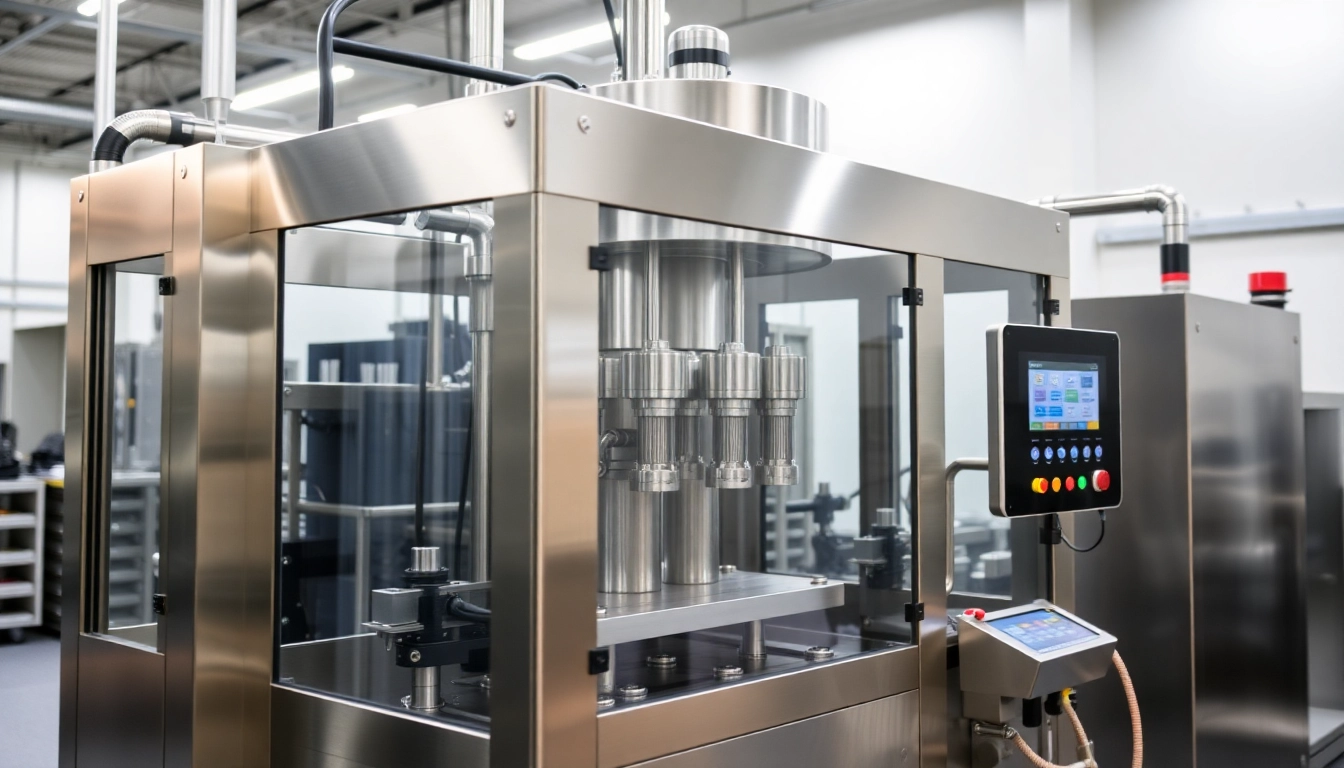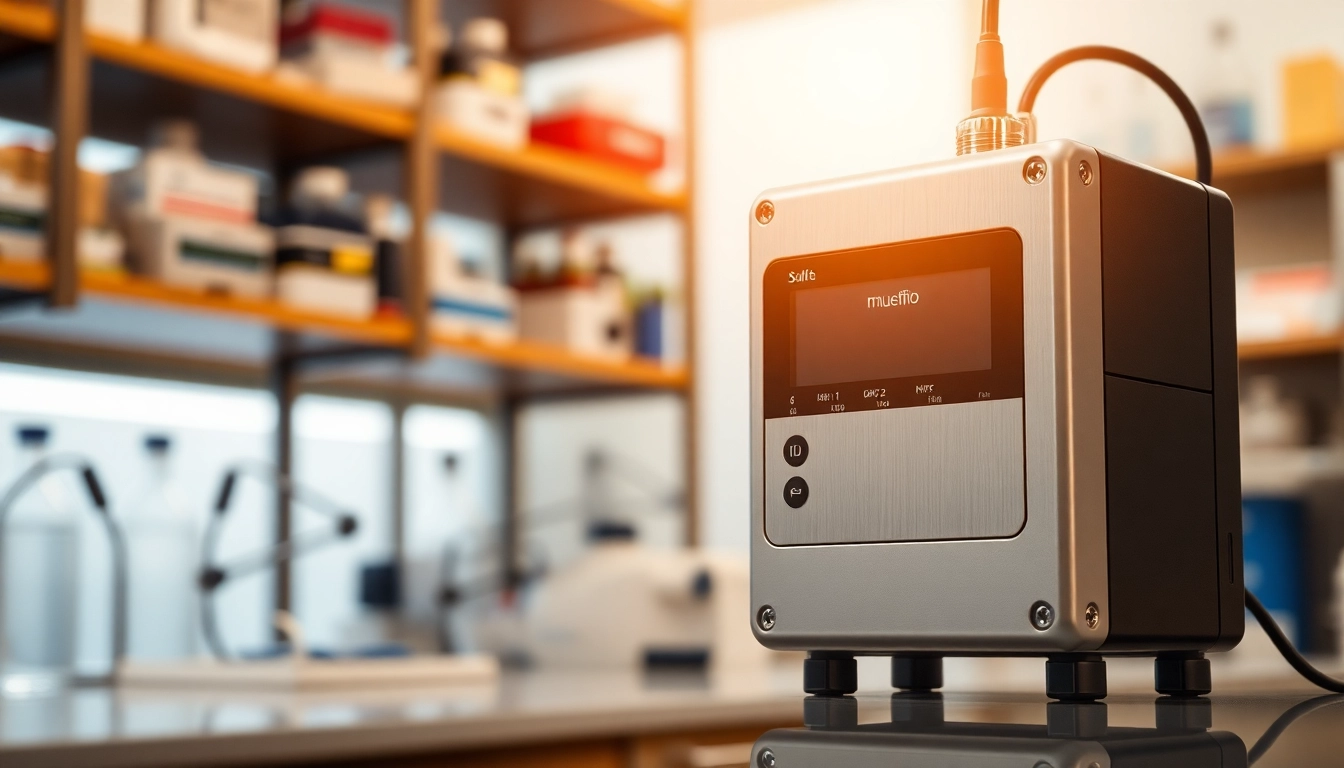Understanding Filling Machines
What is a Filling Machine?
A filling machine is a crucial piece of equipment used in various industries to automate the process of filling containers with liquids, powders, or granules. These machines are designed to enhance efficiency, accuracy, and consistency in the packaging process, essentially transforming items from bulk storage into ready-for-sale products. The technology has evolved considerably, allowing businesses to streamline their operations, reduce labor costs, and minimize human error. Regardless of whether a company is involved in food and beverage, pharmaceuticals, or cosmetics, utilizing a filling machine can make a significant positive impact on production speed and overall quality.
Types of Filling Machines
Filling machines can be categorized into several types based on their operation, functionality, and application. Each type has unique features that make it suitable for specific tasks:
- Manual Filling Machines: Typically used for small-scale operations, these machines require human intervention for the filling process. They are often cost-effective but can be labor-intensive and prone to inconsistencies.
- Semi-Automatic Filling Machines: Incorporating both manual operation and automatic functionalities, these machines facilitate the filling process while requiring some human input. They are suitable for medium-sized operations and provide a balance between efficiency and cost.
- Fully Automatic Filling Machines: These machines operate autonomously with minimal human involvement, making them ideal for large-scale production. They often include advanced technologies like sensors and PLCs (Programmable Logic Controllers) to ensure high precision and speed.
- Piston Filling Machines: Commonly used for thick liquids and pastes, these machines use a piston mechanism to draw and dispense the product. They are known for their accuracy and ability to handle viscous materials.
- Volumetric Filling Machines: These machines fill products based on volume, which can vary depending on the liquid’s density. They are ideal for liquids, sauces, and creams, ensuring proper measurement.
- Gravity Filling Machines: Utilizing gravity to fill containers, these machines are best suited for thin liquids. They require a carefully controlled height to ensure consistent fill levels.
- Pneumatic Filling Machines: Utilizing air pressure, these machines can fill a variety of products, including foamy liquids. They are effective for high-speed operations and can accommodate various container sizes.
How Filling Machines Work
The operation of a filling machine can be complex, contingent on the type and design of the machine. However, most filling machines share a few common processes:
- Product Supply: The filling machine must first have a source of the product to fill. This can come from bulk storage tanks or connected supply lines.
- Container Placement: Containers are automatically or manually placed into the machine. Advanced systems use conveyor belts to streamline this process.
- Filling Process: The machine employs its filling mechanism—whether it’s gravity, piston, or pump action—to dispense the correct amount of product into each container.
- Seal or Cap Application: After filling, most machines will also apply a lid or cap to the containers, ensuring they are secure for transport.
- Quality Control: Some machines include integrated quality control features, such as weight sensors or optical sensors, to ensure each container meets pre-defined standards.
Key Features of Filling Machines
Precision and Accuracy
One of the primary benefits of using filling machines is their ability to provide high precision and accuracy, which is essential for maintaining product quality and compliance with industry standards. Modern filling machines utilize advanced technology like flow meters, pressure sensors, and programmable logic controllers to ensure accurate fill volumes, drastically reducing the risk of overfilling or underfilling containers. This precision is particularly vital in industries like pharmaceuticals, where dosage accuracy can directly affect product efficacy and safety.
Speed and Efficiency
In today’s fast-paced market, speed and efficiency are paramount. Filling machines are designed to operate at high speeds, allowing businesses to maximize their output. Automated systems can fill a large number of containers in a short time frame, significantly reducing labor costs and production time compared to manual filling methods. Some modern filling machines can fill up to hundreds of bottles per minute, making them ideal for mass production.
Customization Options
Filling machines come with various customization options to cater to different production needs. These options can include adjustable fill volumes, multiple filling nozzles for different product types, and the ability to switch between filling liquids and powders. Such adaptability allows businesses to scale their operations as needed, ensuring they can meet changing market demands without requiring a complete overhaul of their machinery.
Applications of Filling Machines
Food and Beverage Industry
The food and beverage industry relies heavily on filling machines for packaging products such as juices, sauces, and ready-to-eat meals. Filling machines are engineered to handle various product viscosities and maintain hygiene standards required for food safety. They help ensure that food products are properly sealed and preserved, significantly reducing spoilage and waste.
Chemical Production
In chemical production, filling machines are utilized for packaging hazardous or non-hazardous liquids and powders. These machines must adhere to strict safety regulations and are designed to minimize spillage and exposure during the filling process. The need for high precision in the amount filled is also crucial, as chemical formulations often require exact measurements to maintain quality and effectiveness.
Cosmetic and Pharmaceutical Uses
Filling machines play a crucial role in the cosmetic and pharmaceutical industries, where product integrity is essential. For cosmetics, these machines are used to fill skincare creams, serums, and makeup products into containers without contamination. In pharmaceuticals, precision filling systems are essential for ensuring accurate dosages in liquid medications and other health products, thereby safeguarding patient safety.
Choosing the Right Filling Machine
Assessing Your Needs
Choosing the right filling machine involves a thorough assessment of your production needs. Factors to consider include the type of product to be filled, the desired fill speed, and container specifications. Businesses should evaluate their current production capacities and future growth plans to select a machine that will accommodate their evolving needs without requiring constant upgrades.
Budget Considerations
Budget is a critical factor when selecting a filling machine. While fully automatic machines tend to have a higher upfront cost, they often lead to lower operational costs over time due to their efficiency and reduced labor requirements. Companies must weigh the initial investment against long-term savings and the potential for increased production capabilities to ensure they are making a financially sound decision.
Supplier Reliability and Support
A reliable supplier is crucial for a successful filling machine purchase. Businesses should seek suppliers with a good reputation for quality, reliability, and customer support. This includes considering the availability of maintenance services, warranty options, and the ease of obtaining replacement parts, as these factors can significantly affect the machine’s performance and longevity in the long run.
Maintaining Your Filling Machine
Regular Maintenance Practices
Regular maintenance is essential to keep filling machines operating at peak performance. Maintenance practices should include routine inspections, cleaning, and lubrication of moving parts. Following a preventive maintenance schedule can help identify potential issues before they lead to machine downtime, ensuring consistent production output.
Common Troubleshooting Tips
Even the best filling machines may encounter problems from time to time. Common issues include inconsistent fill levels, leaking product, or machine jams. Troubleshooting tips include:
- Checking for blockages in fill nozzles or hoppers.
- Ensuring that sensors and PLCs are functioning correctly.
- Regularly calibrating the machine to ensure accurate measurements.
- Inspecting seals and valves for wear and tear.
When to Seek Professional Help
While many maintenance tasks can be performed in-house, some issues may require professional assistance. Businesses should seek expert help for complex repairs, major breakdowns, or electrical system malfunctions. Adequate technical support can minimize downtime and ensure the machine operates effectively for years to come.



